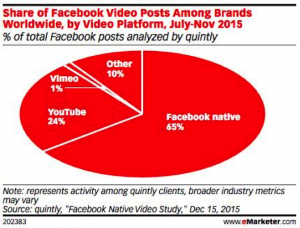Native advertising is one of the fastest rising trends in the advertising and publishing world, and while there are often different descriptions as to what constitutes native, we pulled the simplest/best one from Direct Marketing News: “Native advertising is a marketing or paid-media tactic that aims to leverage a publisher’s storytelling tools.”
Native advertising is a marketing or paid-media tactic that aims to leverage a publisher’s storytelling tools.
Even from a design perspective, native advertising is meant to fall in line with the non-sponsored content around it, hence the ‘native’ adjective. And to give a sense at how quickly it’s growing, according to one study, native ad spending in the U.S. has increased 68 percent since 2013 and is expected to skyrocket another 166 percent by 2018.
Studies find that native ads are popular among marketers for several reasons:
- They produce both greater brand affinity and higher conversion rates than traditional banner ads. Beeby Clark+Meyler led a native advertising campaign for GE which reached 5.1 million people and resulted in 416,000 clickthroughs — an astronomical >8% CTR.
- There’s evidence that internet users prefer native ads to other formats. One study noticed that subjects were 25% more likely to look at a native ad than they were at a banner, and they looked at them 53% more frequently, checking them out 4.1 times per session on average (versus 2.7% for banners).
- They circumvent browser ad blockers with their integration with a publisher’s content.
- They appeal equally across a highly diversified audience, indicating greater consumer acceptance of this type of advertising.
Amid the variety of both the good and the bad attempts at this ad format, we’ve noted a few trends that science marketers should pay attention to.
1. Posting video directly to Facebook
 Due to the storytelling nature of native advertising, video usage is a natural fit for the format. Studies have found, perhaps not surprisingly, that videos uploaded directly to Facebook (as opposed to using a link from an external video site like YouTube or Vimeo) have a higher organic reach. One can guess this is a function of the super-secret (and eternally frustrating) Facebook algorithm, but it’s causing brands to opt for directly uploading to the social media sites more and more.
Due to the storytelling nature of native advertising, video usage is a natural fit for the format. Studies have found, perhaps not surprisingly, that videos uploaded directly to Facebook (as opposed to using a link from an external video site like YouTube or Vimeo) have a higher organic reach. One can guess this is a function of the super-secret (and eternally frustrating) Facebook algorithm, but it’s causing brands to opt for directly uploading to the social media sites more and more.
2. Allowing consumers to choose
Some companies, like the map application Waze, are adding their own spin on labeling native content by allowing customers to choose what brands they want to see. Not only does this put control directly into the hands of the consumer, but it also ensures greater levels of brand loyalty, more interaction with these consumers, and higher conversion rates. Facebook is also doing this, although not on a brand level, by letting users select their ad preferences based on their own interest. What can marketers take away from this trend? Make sure your campaign aligns with the publication in which you want to run it. Reaching your audience where they are is one way to ensure it’ll be content they’ll want to read.
3. Native ad creation
Currently, only 24% of magazines use a dedicated team to help produce native ads and instead opt to use rank and file editorial staff, which, depending on the type of publication you are, has the potential to erode trust. As such, many publications have specific teams devoted to collaboration with brands (such as the New York Times’ T Brand Studio). The best way to maintain reader trust is to adhere to the US Federal Trade Commission (FTC) recommended guidelines for labeling sponsored content. This is a ‘trend’ that may shift as new guidelines are released, but when working with a publisher, don’t be afraid to ask questions about their setup.
 In short, native advertising uses an interesting and confluent approach to ads, but consumer trust can be eroded if executed poorly. Because trust is such a central issue for consumers, many publishers and platforms struggle with exactly how transparent they should be with this format.
In short, native advertising uses an interesting and confluent approach to ads, but consumer trust can be eroded if executed poorly. Because trust is such a central issue for consumers, many publishers and platforms struggle with exactly how transparent they should be with this format.
Our best advice for science marketers? Native advertising’s forward march is expected to continue for the foreseeable future so it’s well worth exploring creative opportunities to use this strategy whether through video, advertorials, infographics, or sponsored content – or something completely new and unique to your brand. However, it’s also worth taking the time to review both excellent and poor examples of how other brands have ventured into this market and learn from their successes and missteps.
Consumers have indicated that they prefer native-style advertising, but transparency will always be key. The goal of native advertising is not to trick your audience, but to give them content they want to consume. Don’t risk your brand reputation by attempting to sidestep the fact that the content is sponsored.
What native advertising campaigns have you enjoyed? Tell us in the comments!


















